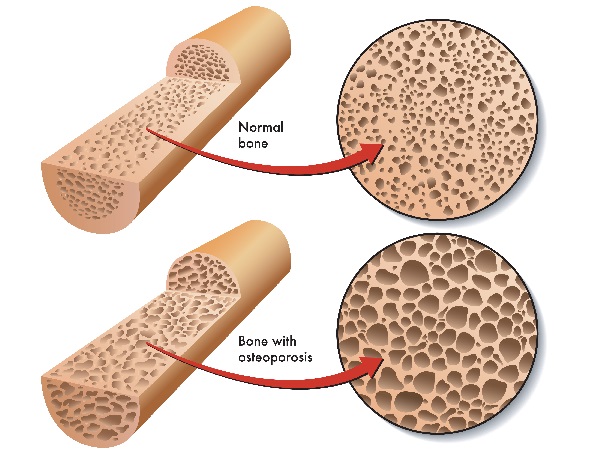The information for this article came from a paper written for my Master’s Thesis in Nutrition and Metabolism, Biomedical Section of The University of South Florida School of Medicine
First, What Is Nutrition?
We talk about nutrition, but what really does that mean? The first thing that comes to mind is food. Right? But then we hear that some foods aren’t so healthy for us, like trans-fats or fast food or even sugar? Then we also hear about super-foods gogi berries, blue berries, and avocados. But does that really explain nutrition? You may have an in-depth understanding, if this topic has been important to you or held your interest. Maybe it is not something you have given great thought to because it has not been a great part of our cultural discussion or you already have more on your plate (pun intended) than you can handle and just haven’t had time.
To Understand What Nutrition Is, We Must First Understand What Need Nutrition Fills!
The place to begin is with the smallest living components of our bodies: your cells. If your cells are healthy, you are healthy! Our bodies are made of organ systems – nervous, cardiovascular, digestive, etc. These systems are composed of organs; organs are composed of tissues; and tissues composed of cells. The cells are the smallest living components. It is the cells that are actually doing the “living”, if you will, because a tissue, organ, system and body are made up of these living cells. If the cells die, then none of the rest exists any longer. So, we can say that nutrition is a cellular need, but what is that need?
Your cells live because your genes direct them to do so by creating millions of protein molecules, which then make everything the genes code for happen. There are structural proteins that give your cells, tissues, organs, systems and body its physical structure. Enzymes (proteins that make chemical reactions happen) direct billions of chemical reactions in your cells that all inter-relate and are essential for cell life. And, signaling molecules – most of which are protein – signal within cells and between cells to give feedback control, up-regulating or down-regulating enzymatic reactions. These various protein molecules are mostly located inside the cells, but some are in the cellular membranes (made of lipids – aka fats), which surround and run through the cells and some are secreted outside the cells to signal other cells. All of these activities are called metabolism and every structural building block, enzymatic reaction (billions) and signaling event takes energy to happen.
So In Order For Your Cells To Live, They Need:
- Protein – to make structural proteins, enzymes and signaling molecules
- Lipid (Fat) – to make the cellular membranes and provide energy
- Carbohydrate – primarily providing energy but also for metabolic intermediaries (molecules that can be used over and over again in various chemical reactions and inter-conversion between protein, lipid and carbohydrate)
These are some of the things your cells need to live and are called macronutrients.
Other Things Your Cells Need To Live And Thrive Are:
- Vitamins
- Most are co-enzymes needed for many of your enzymatic reactions that give your cells life. Examples:
- Vitamin C needed for crosslinking of your collagen which is important for your connective tissue, blood vessels and skin
- Or B2 and B3 for carrying energy producing factors between all (billions) of your enzymatic reactions
- Most are co-enzymes needed for many of your enzymatic reactions that give your cells life. Examples:
- Minerals
- Most are co-factors that act as energy carriers or molecule carriers generally acting in concert with your enzymes or other molecules important in your metabolic chemical reactions that give your cells life, vitality. Examples:
- Iron is incorporated into your hemoglobin, necessary for carrying oxygen to your cells to metabolize carbohydrates and fats for energy in your mitochondria.
- B12 carries the mineral cobalamine in it, which is essential for molecular transfer in certain, very important metabolic reactions in your cells.
- Most are co-factors that act as energy carriers or molecule carriers generally acting in concert with your enzymes or other molecules important in your metabolic chemical reactions that give your cells life, vitality. Examples:
- Bioflavinoids and other molecules
- Have multiple functions in healthy cell metabolism, but one if their most important functions in your cells is turning on your NRF2 transcription factor that causes a large number of antioxidant genes to turn on and turning off your NF-kB transcription factor that turns off your “inflammation” genes. See the articles – “Eating Your Way To Optimal Wellness: Super-Foods On ‘Steroids’” and “Nutrigenomic Foods – Super-Foods On ‘Steroids’” – for more information on this very important topic that enhances your cells vitality and life and for lists of foods that contain these important molecules. Examples:
- Sulforaphane in cruciferous vegetables
- Curcuminoids in curcumin (turmeric)
- Anthocyanidins in red, purple and blue berries
- Have multiple functions in healthy cell metabolism, but one if their most important functions in your cells is turning on your NRF2 transcription factor that causes a large number of antioxidant genes to turn on and turning off your NF-kB transcription factor that turns off your “inflammation” genes. See the articles – “Eating Your Way To Optimal Wellness: Super-Foods On ‘Steroids’” and “Nutrigenomic Foods – Super-Foods On ‘Steroids’” – for more information on this very important topic that enhances your cells vitality and life and for lists of foods that contain these important molecules. Examples:
These needs your cells have in order to live and to “live well” are called micronutrients and there are many others we know about that aren’t listed above and more to be discovered.
Watch this video from Harvard to see some amazing examples of the metabolic activities these nutrients are an essential part of in your cells. The shimmering/wavy structures are membrane made of lipid. Most other molecules are proteins that are structural, enzymes or signaling molecules. Carbohydrates produce the energy for all this activity. And without optimal micronutrients, it begins to deteriorate:
So, We Can Now Define Nutrition As:
Those molecules (chemicals) that your cells need to meet their metabolic needs in order to live well.
Now We Can Begin To Answer The Question: Are You Malnourished?
Malnutrition is defined by the A.D.A.M. Medical encyclopedia as “the condition that occurs when your body does not get enough nutrients.” And now we really know what nutrients are. But how do you know what’s enough? If you ask one of my sons-in-law who is in his thirties, he might say, “Well obviously, I get enough because my cells are all still alive”. But he doesn’t eat vegetables or take vitamins. So is he really getting enough?
The nutritional research is pretty clear. The majority of Americans are malnourished. In a study of younger Americans age 2 – 19, 16% met none of the food group recommendations and only 1% met all food group recommendations. In a study of adults 20 and over, none met all food group recommendations. In a study of adults 60 and older, only 17% were found to eat a healthy diet. The biggest deficit in nutrition in America is in micronutrient status, which are primarily plant based, and the biggest surplus in the Standard American Diet are the macronutrients. In the 20 and over study, grains, meat and beans were the only food groups that were identified as sufficient. But if you look at America’s obesity problem, these high sources of protein fat and carbohydrate are very over-represented. And most foods Americans eat are processed, which means many of the micronutrients are stripped out. It also means artificial substances your body was never intended to consume are added. This is a problem because your genes and proteins have no use for and may actually be damaged by these artificial substances. And this isn’t even taking into account pesticides, herbicides, antibiotics, meat processing chemicals, hormones added to our food that have been shown to adversely affect cellular metabolism.
How Does Malnutrition Affect Health?
A 2013 study by Lambrinoudak concluded that “A healthy diet is essential for the prevention of all major chronic non-communicable diseases in midlife and beyond, both directly, through the effect of individual macro- and micronutrients and indirectly, through the control of body weight…” And another study states, “Even though genetic predisposition increases susceptible people’s risk for many of these chronic diseases, these conditions may be diminished or prevented by improvements in the American diet.” (Bidlack 1996). It is clear that malnutrition leads to all chronic disease and now you have the information to understand why. Your cells need what they need to live, be vital, thrive and stay healthy.
The Special Circumstance Of Trauma and Surgery
When our cells (bodies) become traumatized as from an injury or surgery, they have greatly increased metabolic needs for immune activation and cell division – fighting infection and wound healing. In 1979, Mullen found 97% of surgical patients studied had at least 1 abnormality indicating malnutrition. Multiple studies have found malnourished patients to have greater complications, spend more time in the hospital and have a higher risk of death. And “deficiency of single nutrients also results in altered immune responses: this is observed even when the deficiency state is relatively mild.” (Chandra 1997).
Are You Malnourished?
Armed with the above information, you can now make an educated guestimate. If you have a chronic disease, it is likely that you are. If you eat fast or processed foods on a regular basis, it is likely that you are. If you don’t eat close to 6 half-cup servings of whole vegetables and 4 half-cup servings of whole fruit a day, it is likely that you are. If you are overweight, it is likely that you are.
This might sound like bad news to you, but now that you are armed with knowledge, you have the power to make a change, begin eating healthier and live well. Optimizing your nutrition is a process. It is much more likely that, if you add in an extra serving of vegetable or fruit once a week in 3 months you will reach the 6 & 4 servings and in a year your cells will be much healthier. Go slowly for a lasting change. And if you already have a health issue, we can address that with nutritional supplements or IVs in the short term, while allowing the long term improvements to take effect. If you are going to have surgery, come in for pre- and post-operative nutritional therapy to optimize your immune and repair functions and prevent complications. (See the articles: “Customized IV Nutrient Therapy” and “Pre- and Post-Operative Nutritional IV”)
If you have questions or would like to make an appointment, please Call Dr. Cole in one of our convenient locations.




0 Comments